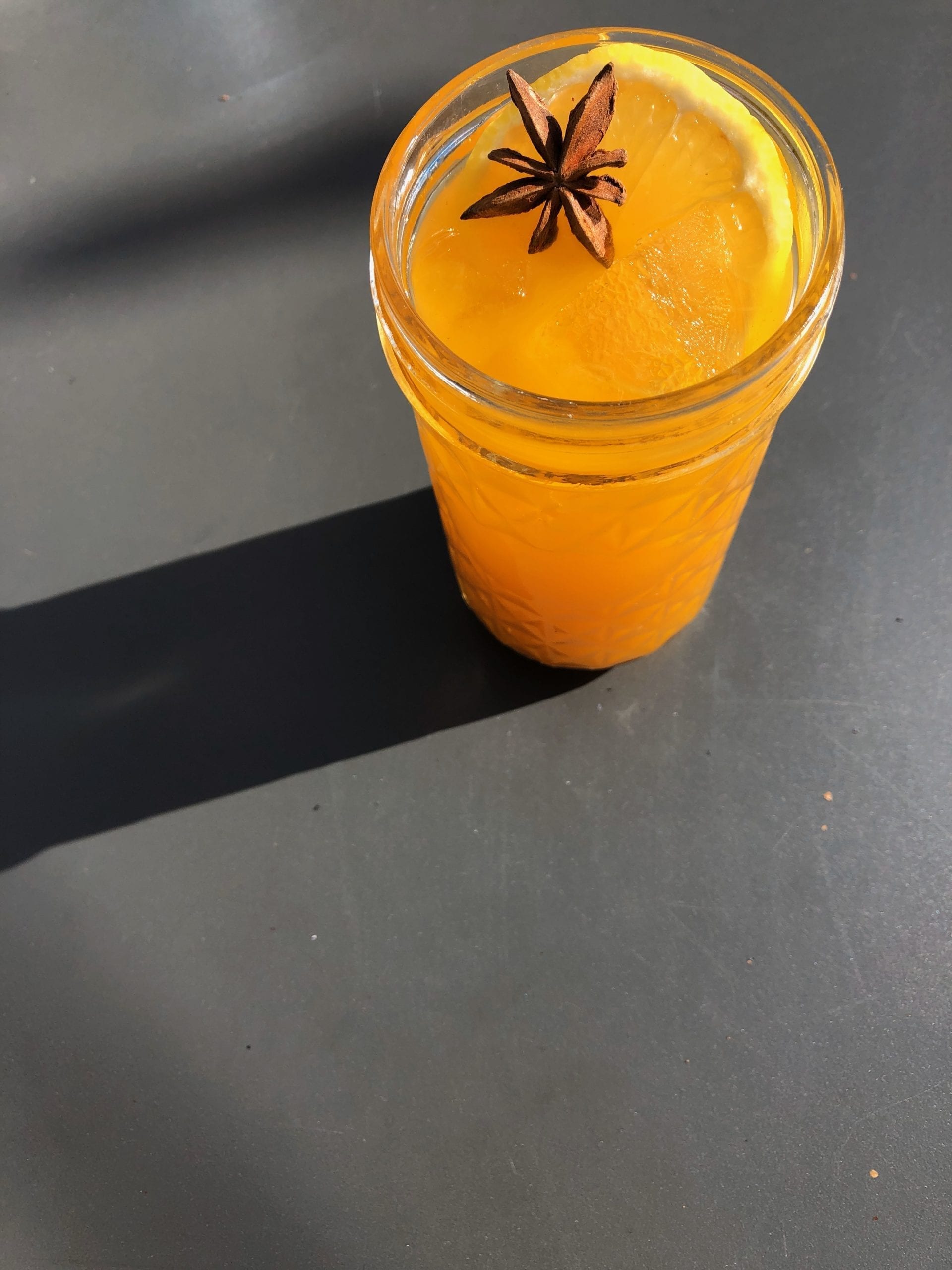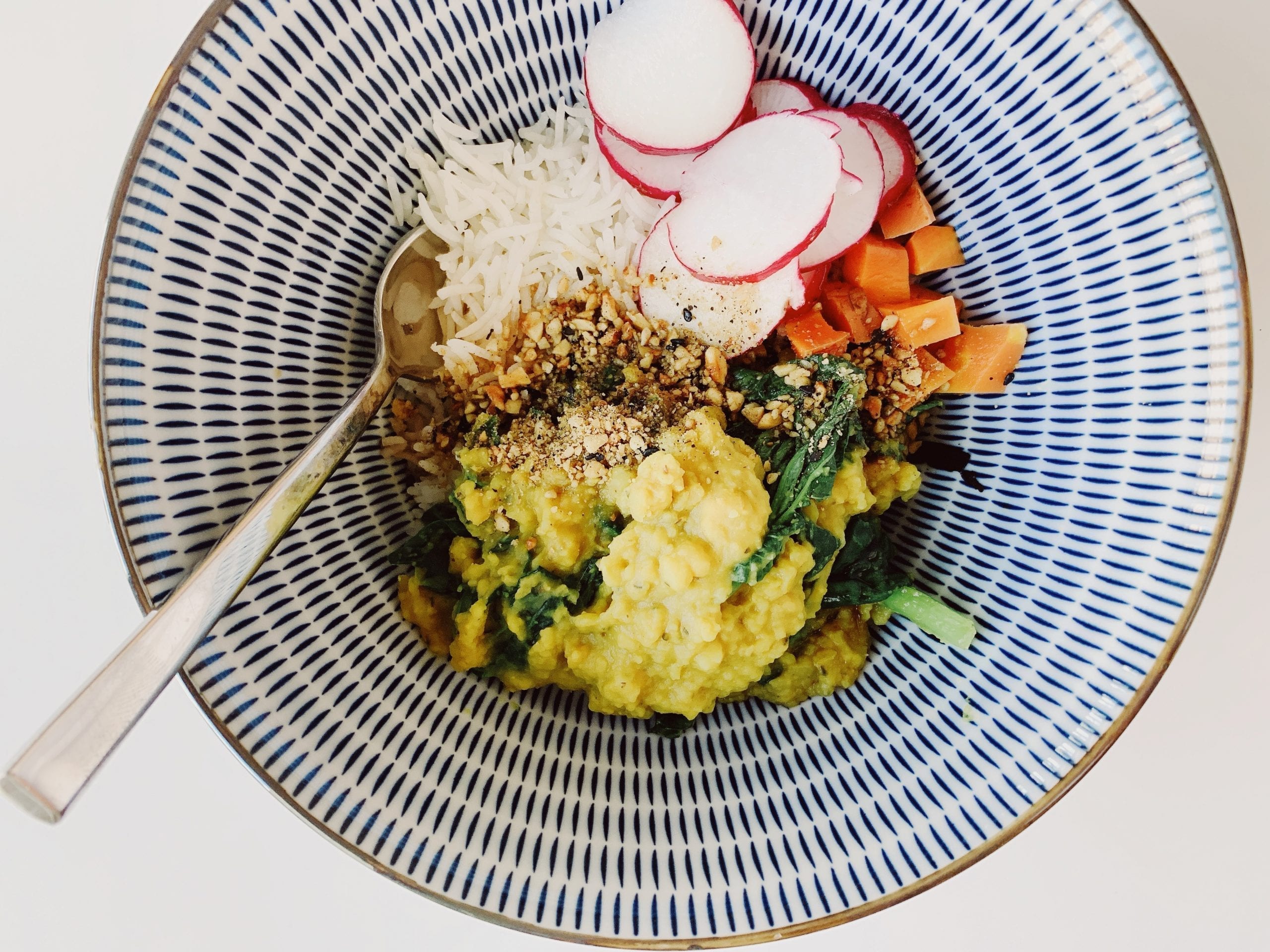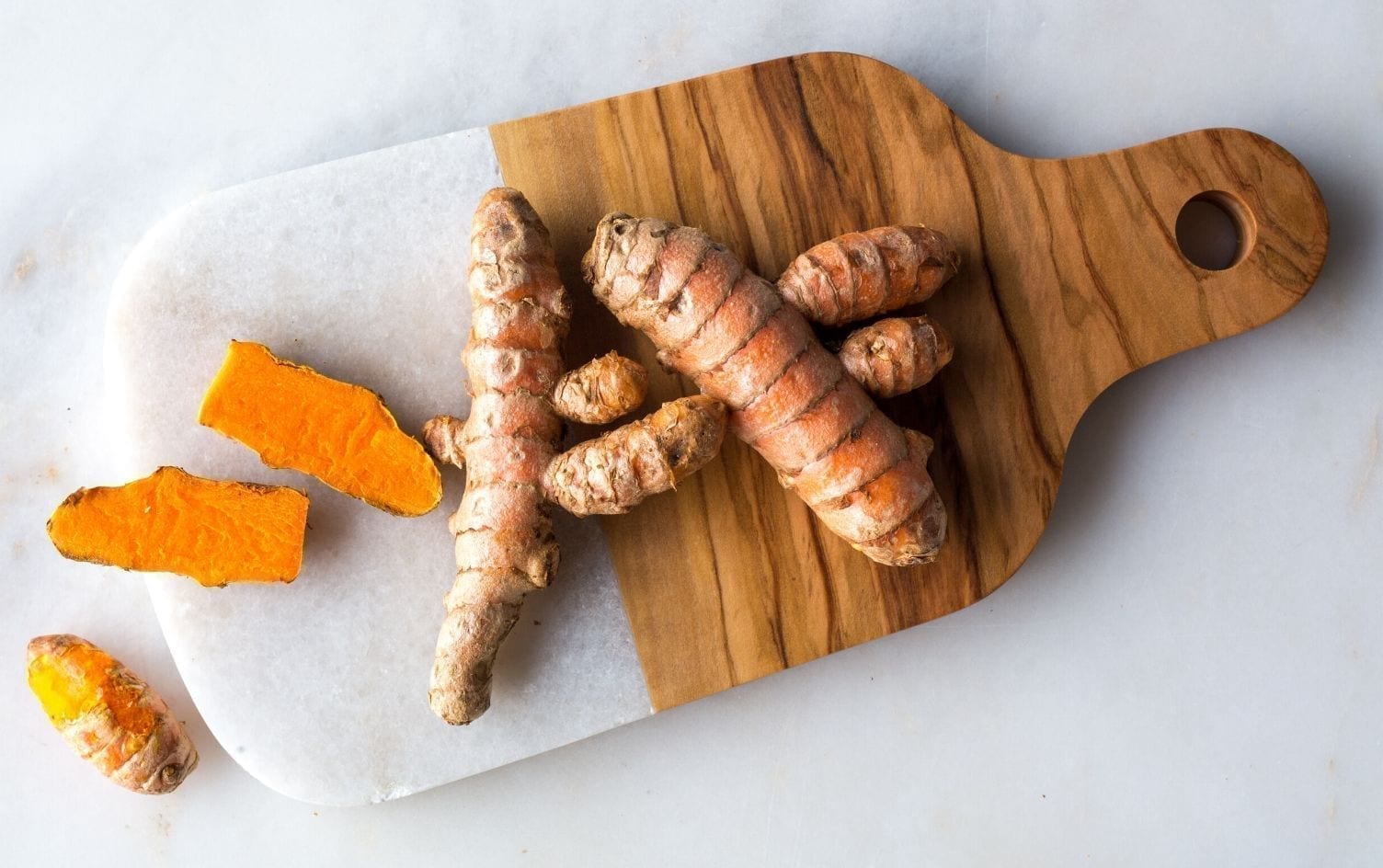Stirred, baked, spun and sauteéd into menus and meals, the golden glow of turmeric is everywhere. Turmeric has been proven to have anti-bacterial and anti-inflammatory properties. Like its cousin ginger, turmeric is a rhizome, or a root, native to Southeast Asia and the Indian subcontinent, but it’s capable of growing anywhere warm with plenty of rainfall. The flavor of turmeric is earthy and bitter, and sometimes musky with a bit of peppery spice. That deep, difficult-to-place flavor in most curry powders is turmeric.

Along with its big flavor punch, the golden hue is quite impressive. A spoonful is enough to dye an entire soup, pot of rice or spice rub with a vibrant shade of yellow-orange. In fact, it’s often added to things like prepared mustard as a natural food dye. Which is also to say: This stuff stains like crazy. If you’re wearing white pants to make any of the recipes and inspirations that follow, it maybe time to consider a costume change.
BUYING TURMERIC
You’re most likely to find turmeric in dried and powdered form, usually in the spice section. It’s easy to use — mixed into marinades and spice rubs or sizzled with aromatics as the base for soups and stews.
If you prefer fresh turmeric, keep an eye out for something that looks like mini knobs of ginger. This is most common at well-stocked grocery stores, natural foods stores or Asian grocers. Fresh turmeric is less potent but still quite bitter, and it’s brighter and fresher than its dried counterpart. You’ll need to use roughly four times the amount of fresh ground turmeric versus dried. Use fresh turmeric as you would ground turmeric — peel it, then slice, mince or grate it and add to your favorite dishes.

Once you consider how to use turmeric in combination with other ingredients, the culinary possibilities are endless!

USING GROUND TURMERIC
- Spin it into smoothies: Add 1 teaspoon for a subtle turmeric hit and up to 2 teaspoons for a more intense flavor. Include a bit of coconut oil in your smoothie to boost turmeric absorption.
- Soup up your soup: Add 1–2 teaspoons to any soup recipe for a deep golden hue and dynamic flavor.
- Curry up: Turmeric warms up the flavor of any curry or stew. Add 1 teaspoon of turmeric when you sauteé vegetables in oil or ghee.
- Golden grains: Add 1/2 teaspoon of turmeric to water when cooking rice or oats for a brightly tinged bowl.
- Golden mac: Boost the health quotient of your macaroni and cheese by stirring in 1/2 teaspoon of turmeric to your cheese sauce. This works for both homemade and boxed varieties.
- Healthy teaser: When brewing regular tea, add 1/4 teaspoon ground turmeric to your mug before pouring in the hot water. You can also simply combine ground turmeric with hot water for a tisane.
- Golden pancake kinda morning: Add 1/2 teaspoon of ground turmeric to your dry pancake mix. The color is amazing!
- Level up your hummus: Combine 1/4 teaspoon ground turmeric with 1 tablespoon of toasted sesame seeds and sprinkle over hummus for a golden showing.
- Bean star: Cook lentils or other legumes with onions, olive oil and 1 teaspoon of ground turmeric. You can either serve them as is, or combine the cooked lentils with cooked quinoa and make patties out of them.

USING FRESH TURMERIC
- Juice it: Add a 1-inch piece of turmeric root to smoothies. You can also include it in fresh-pressed juices. Use the freshly grated root in marinades for chicken, fish and beef. Simply add 1 teaspoon of the grated root to any marinade recipe for a flavor and color kick.
- Salad star: Stir freshly grated turmeric into salad dressings for a punchy addition.
- Get golden: Intensify the flavor and color of pumpkin pie, pumpkin muffins or a pumpkin loaf. Stir in 1 teaspoon of freshly shredded turmeric to the batter and bake as usual.
- Stir it into sautées: Add 1–2 teaspoons of freshly grated turmeric to your stir-fry. You can add it in while you’re sautéing the vegetables.
- Eggcellent news: Sprinkle a teaspoon into your favorite egg dishes. Scrambled eggs or even frittata and quiche recipes love a hit of golden color and a bit of a pungent punch.
- Greek gold: Top plain Greek yogurt with 1 tablespoon of grated fresh turmeric, 1/4 teaspoon freshly ground black pepper, a pinch of sea salt and a teaspoon of olive oil for a savory yogurt riff.




